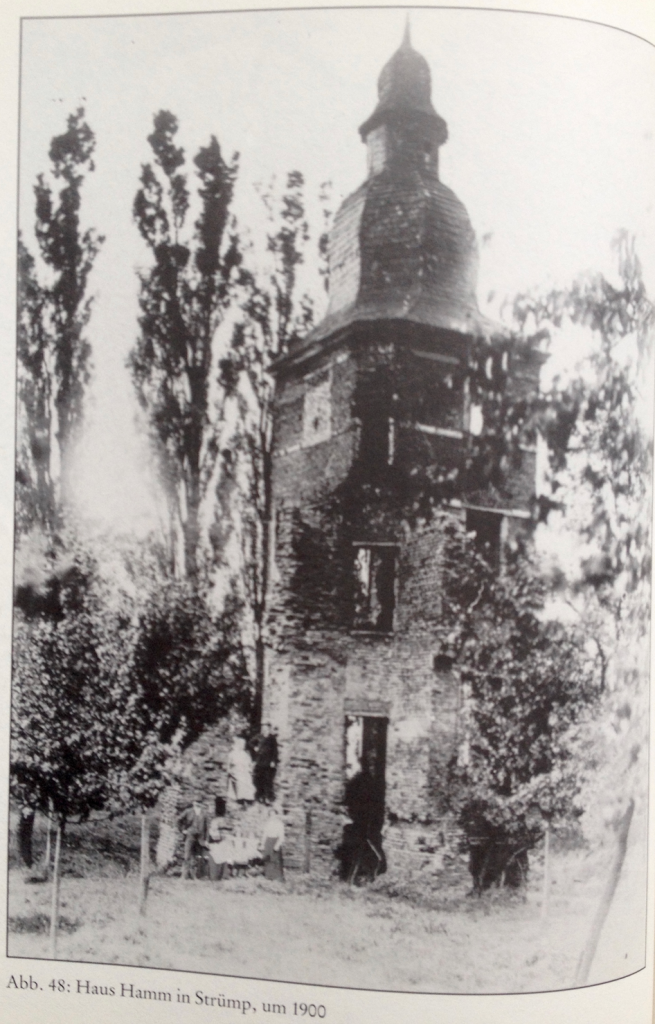The weather here tends to approach from the west. Yesterday around dusk a storm was approaching, which made for beautiful skies over the cabbage fields, when I walked out briefly to post a letter.
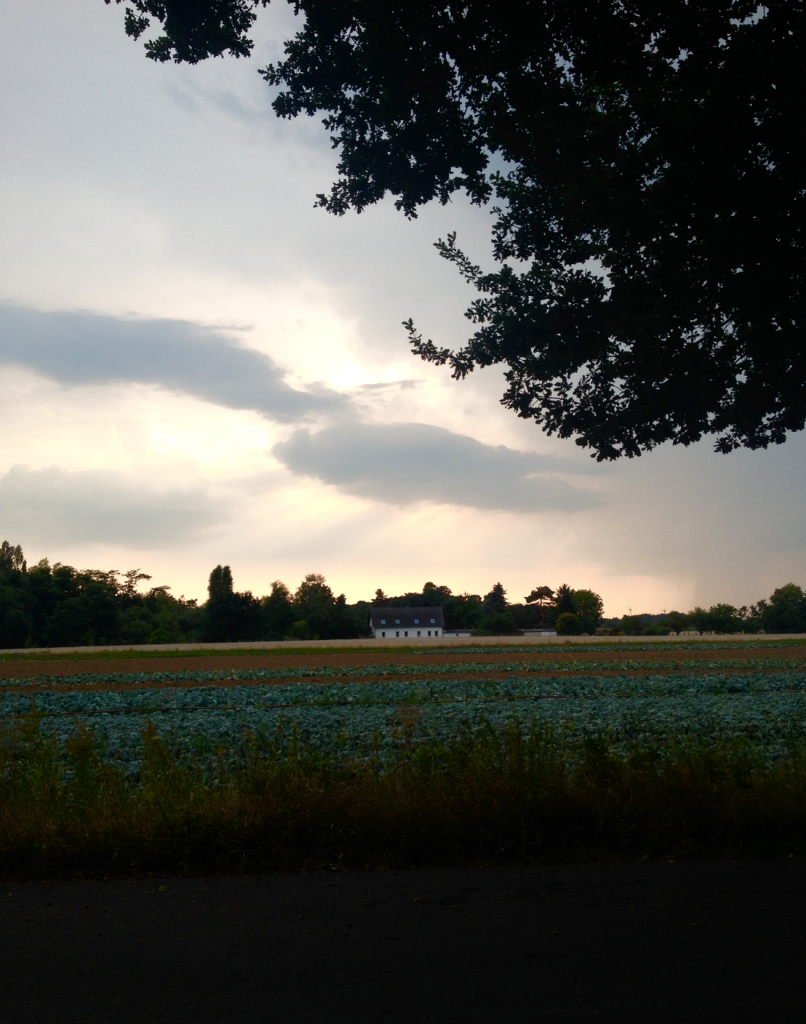
The Devil's Missal by Cathy Dobson
The weather here tends to approach from the west. Yesterday around dusk a storm was approaching, which made for beautiful skies over the cabbage fields, when I walked out briefly to post a letter.

Some people favour geraniums and hanging baskets, others prefer wind-chimes and gnomes. My favourite Meerbusch balcony has gone for the full Jurassic Park effect. I doff my cap to you, dear Dinosaur-balcony-family! Your outdoor paradise is awesome.
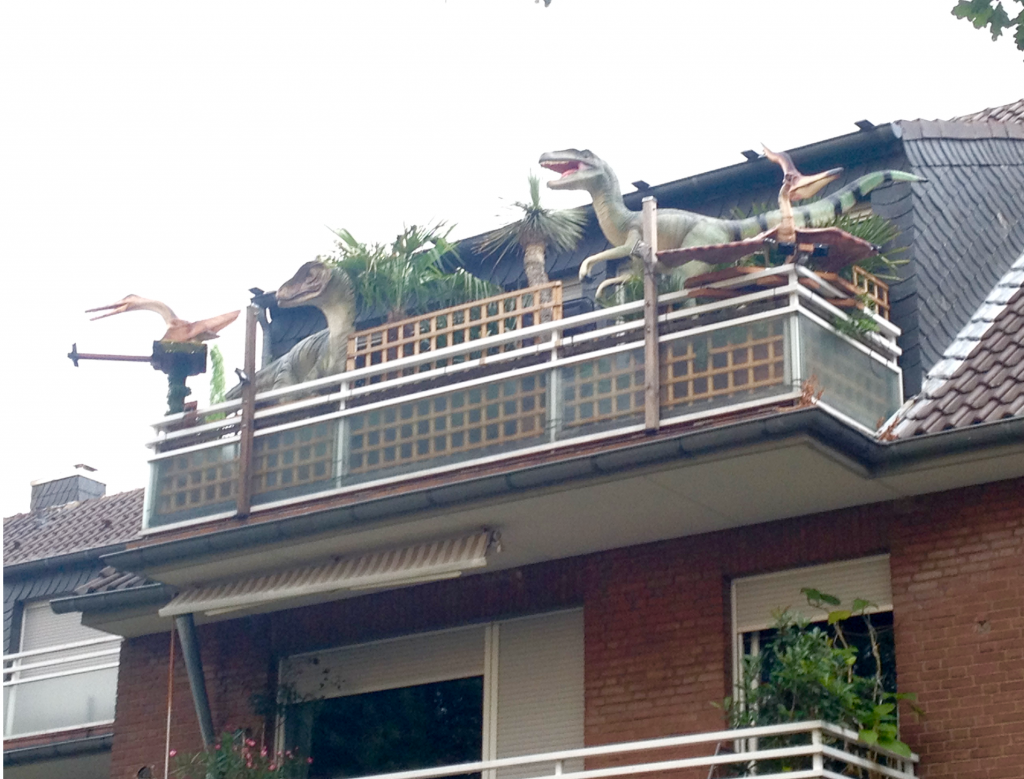
As one foreign settler to another, I have a soft spot for the local parakeet population which lives around Büderich. Of course they visit our garden often because we have a well stocked bird feeder. They seem to get on well with the local birds too. Perhaps they’ve learned to squawk in German?
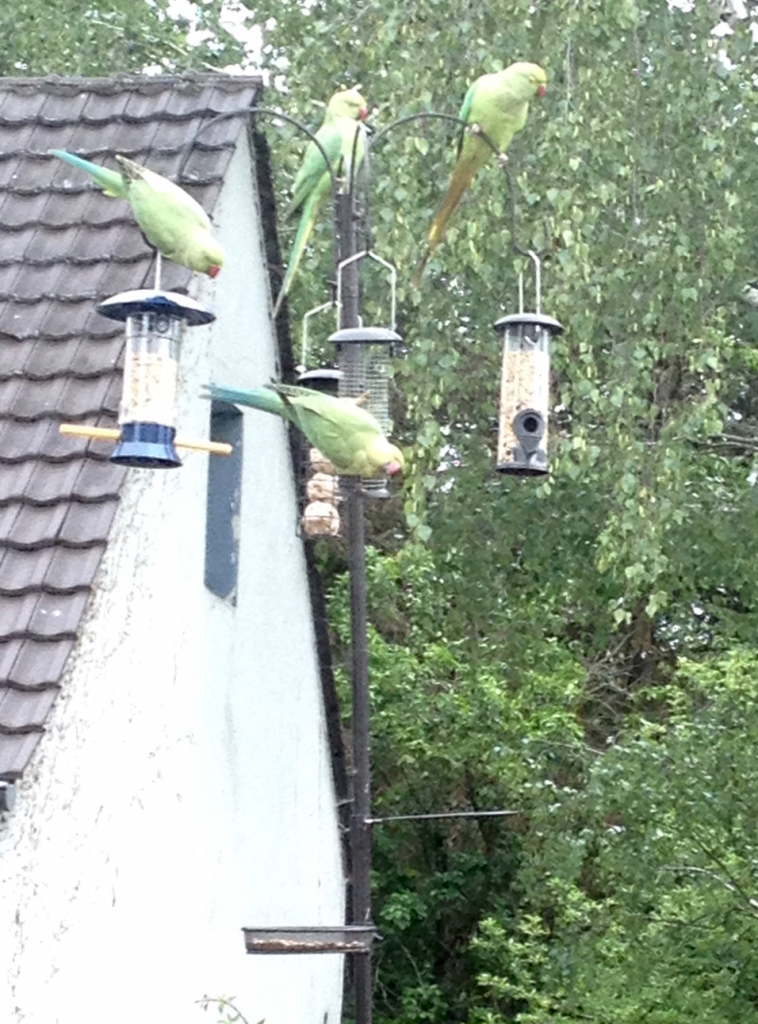

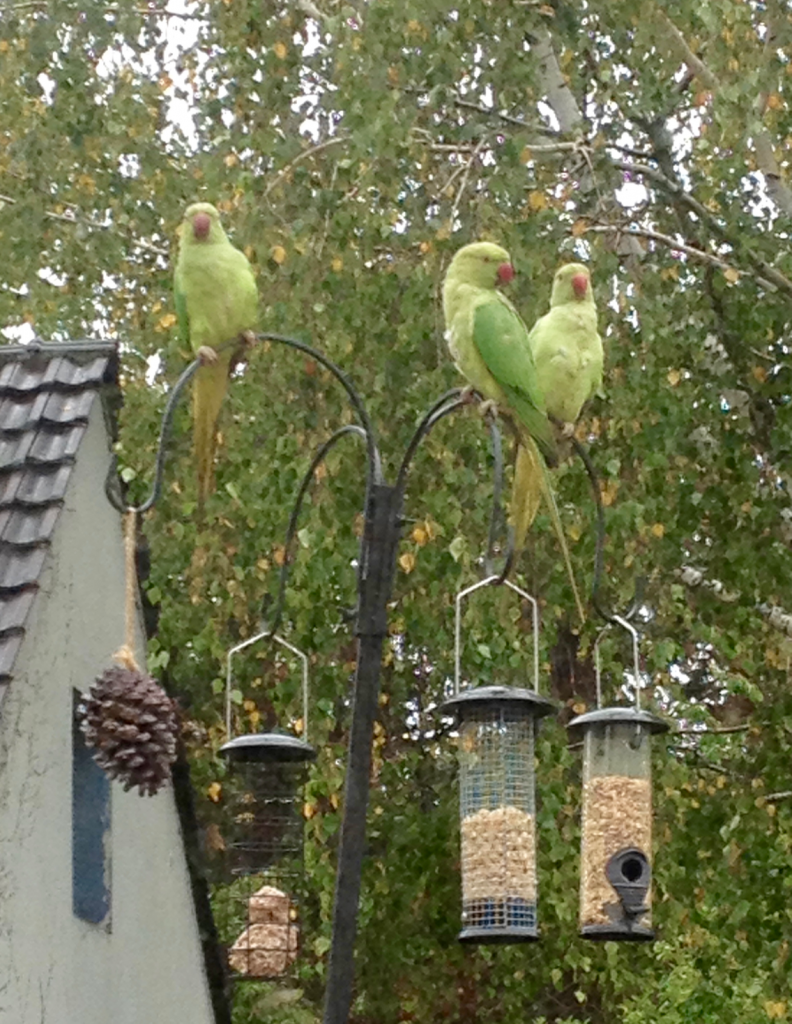
Just look at this lovely Rhine landscape painting by Dr. Charlotte Boller-Dörper showing the scenery around Meerbusch-Büderich. Some parts of the flood plain are still common land and shepherd are permitted to graze their flocks there. You sometimes even see them in Düsseldorf near the Oberkassel bridge.

At the entrance to the cemetary in Büderich, just to the right as you go in, there is a memorial sculpture by Peter Rübsam, erected in 1988, consisting of seven basalt pillars, each with a bronze plaque in front of it. On each plaque is written one word: Dachau, Buchenwald, Theresienstadt, Riga-Kaiserswald, Treblinka, Maidanek, Auschwitz
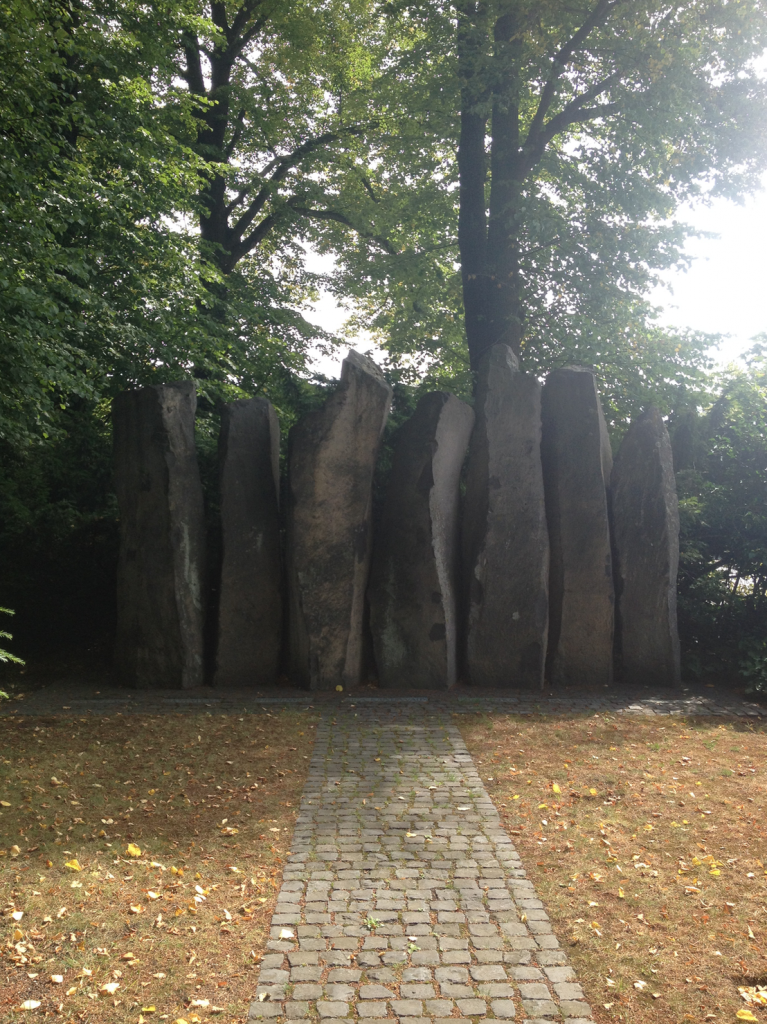
Close family ties took on another meaning back in 1935 when the three Radmacher sisters, Franziska, Leni and Adele and the three Hermkes siblings all married at the same time. For both families it must have been a highly memorable occasion. Nowadays it seems odd that the brides are all wearing black, but white wedding gowns were not well established in the Rhineland until the 1940s. Before that a formal black Sunday dress would typically be teamed with a wedding veil and flowers as we see here.
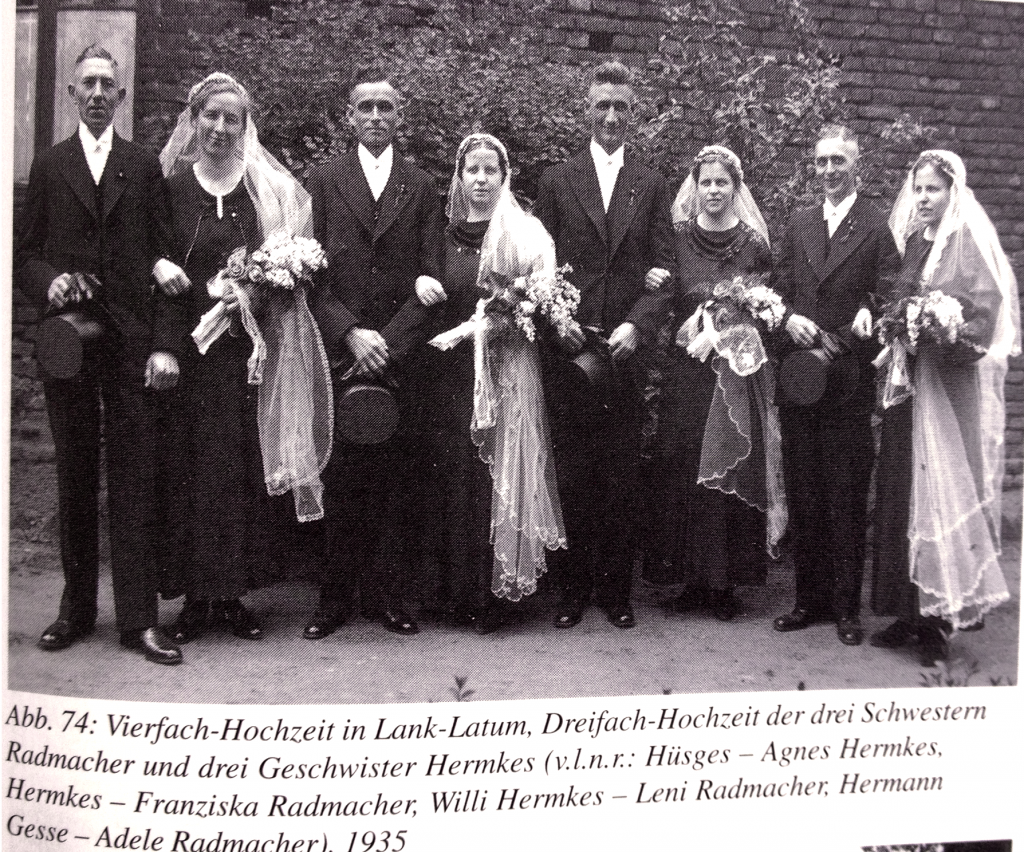
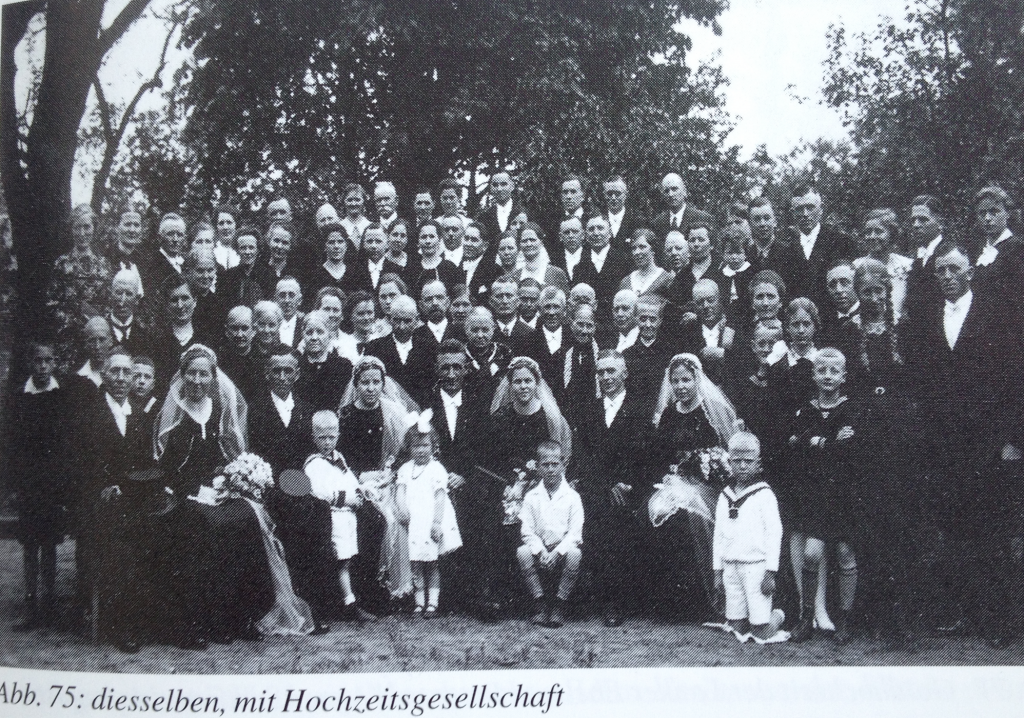
Images from Landleben und Brauch – Heimatkreis Lank e. V. 1998
I wanted to share a few images from today at Haus Meer, the former convent of which very little now remains apart from the grand entrance. When the sun is hot, the long shady tree-lined avenues are gloriously refreshing to walk through.
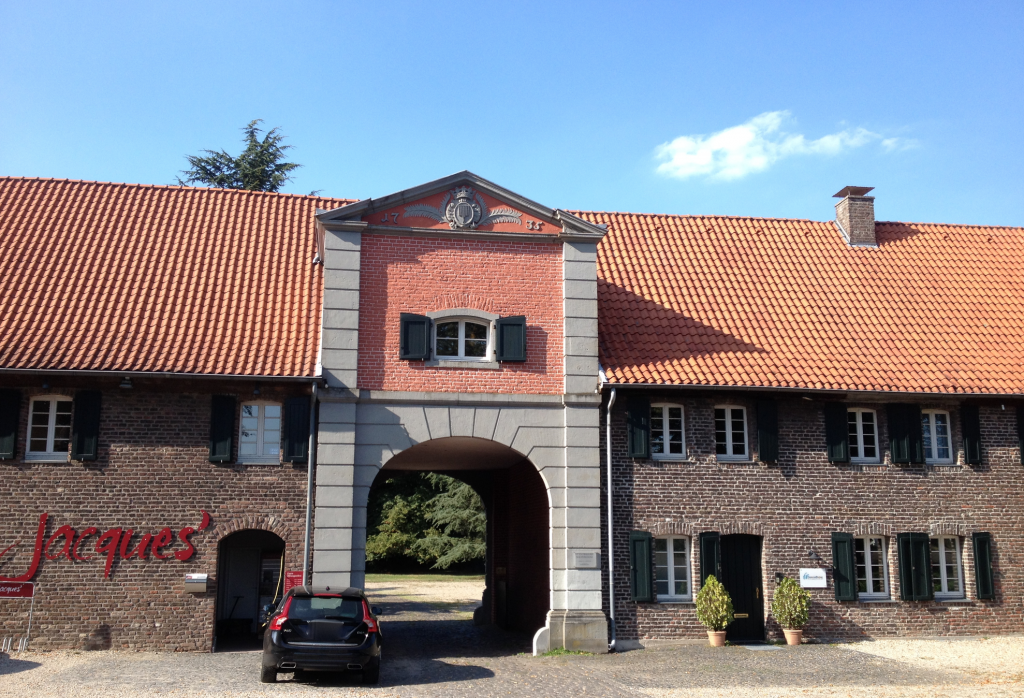
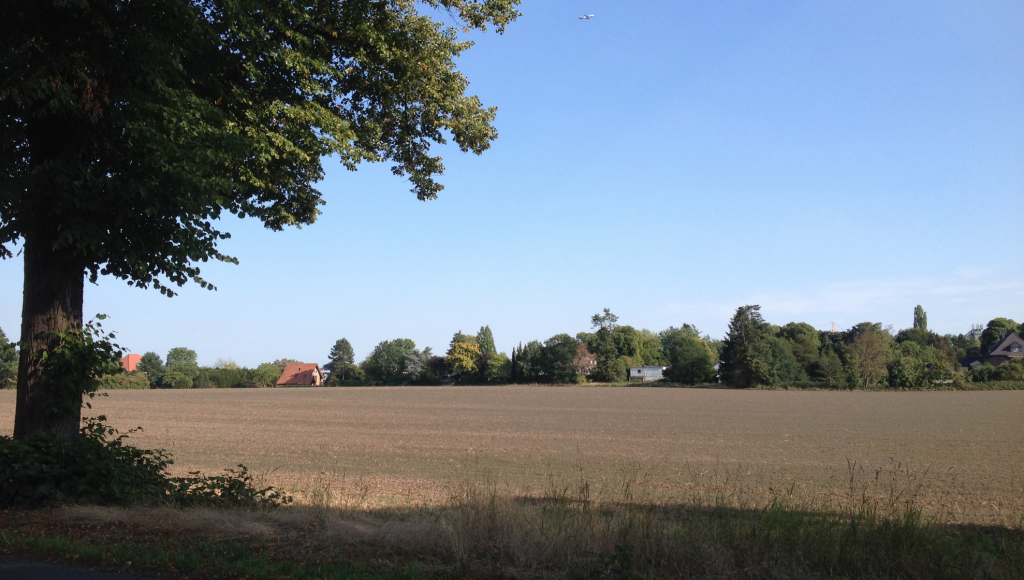
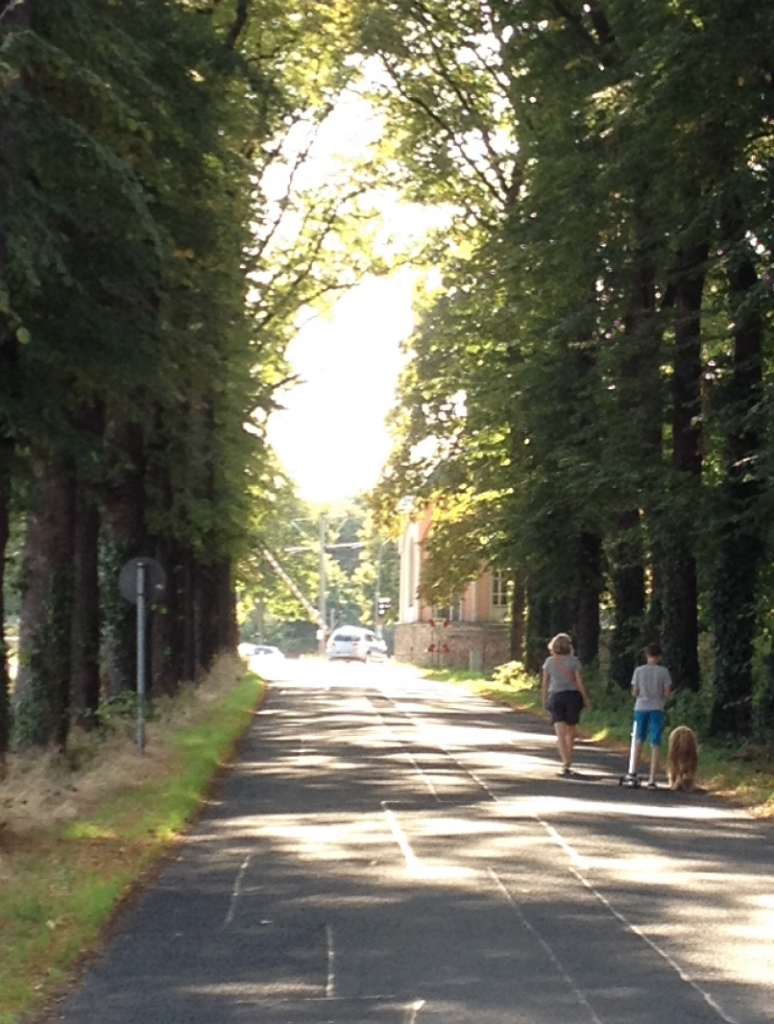
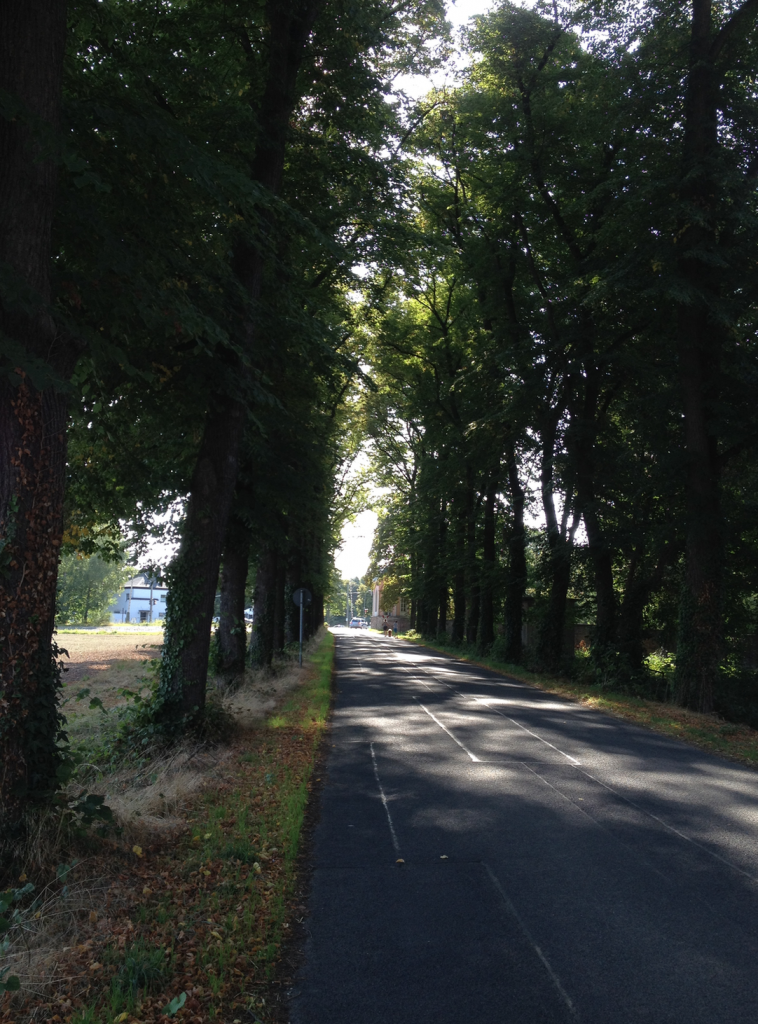
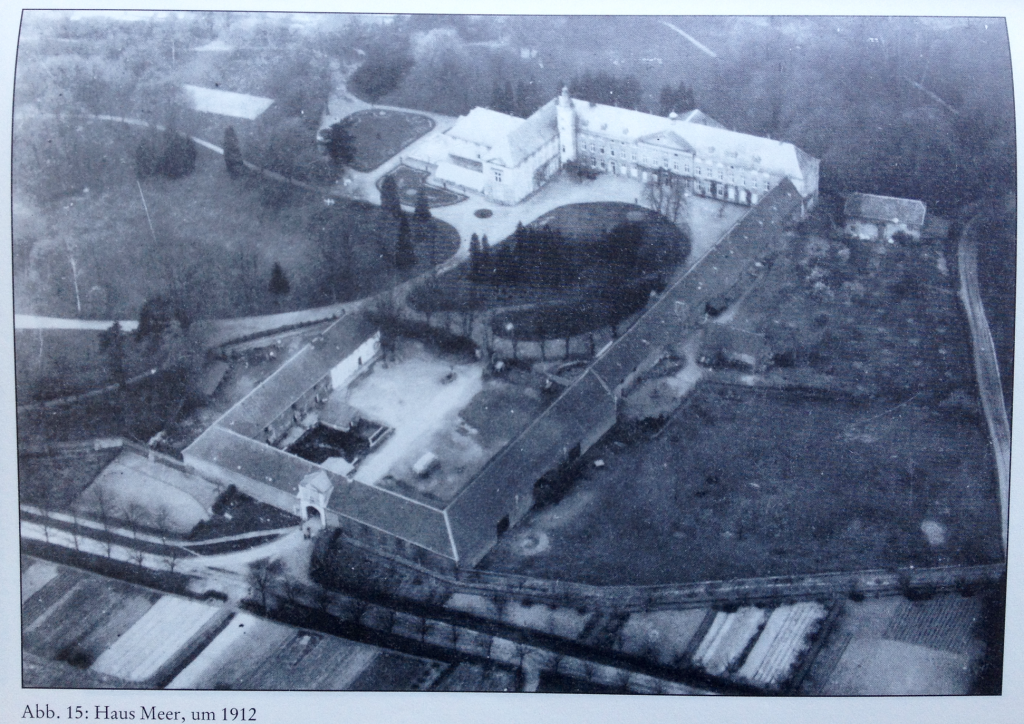
In the early 1990s the grounds of Schloß Pesch were still hugely overgrown and the ‘lawn’ was a mass of weeds and nettles. During the late 90s a gardening contractor was brought in to clear the weeds and plant a proper lawn. This is what it looked like after it had been newly ploughed, rolled and seeded.
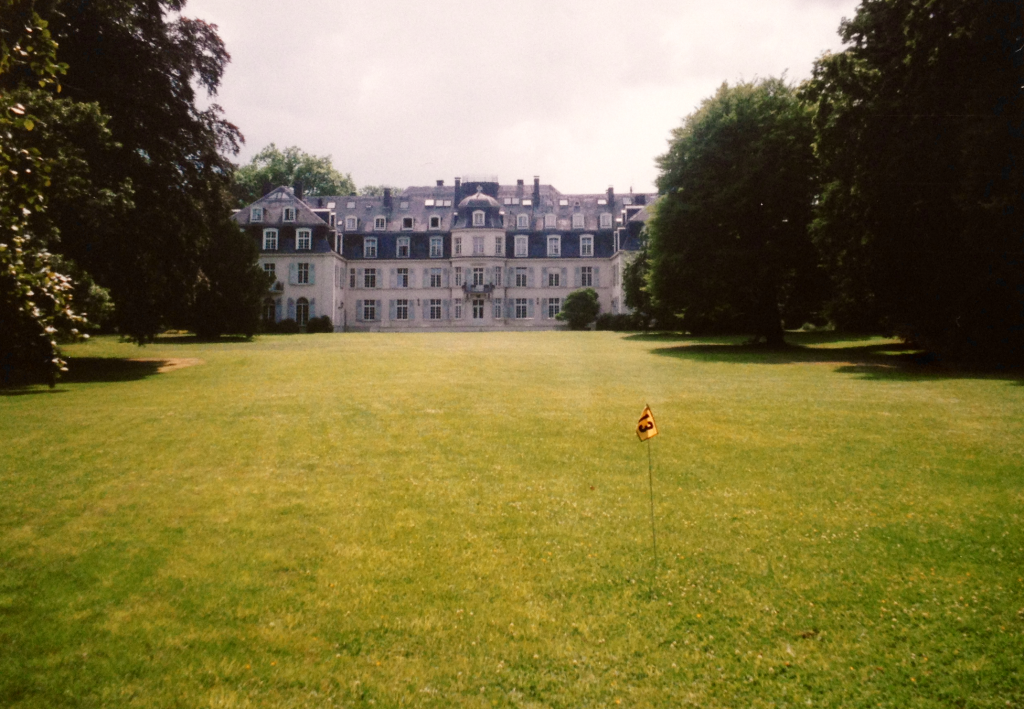
While collecting stories about Meerbusch, sometimes you stumble upon one which is unbelievably poignant.
In the cemetery in Meerbusch-Büderich is a memorial to the local civilian victims of two world wars as well as one unknown soldier. The monument was designed as a warning to the population, never to let such terrible wars recur. The sculpture by Adolf Westergerling is a conical column topped by a raised warning finger. It was erected in 1959.
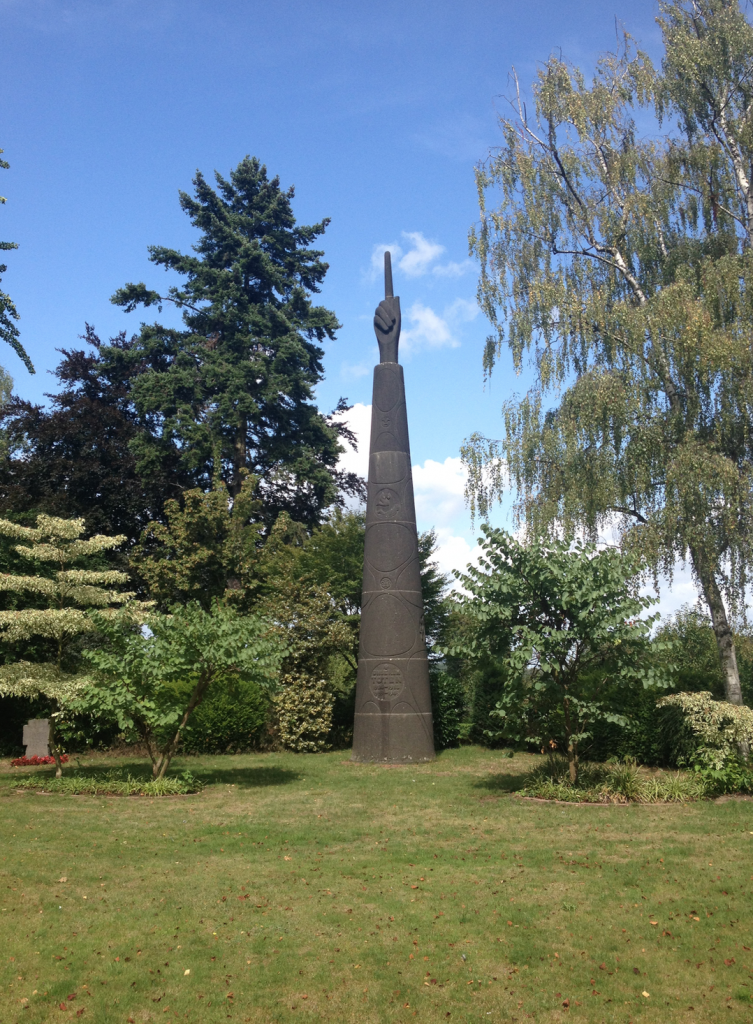
Around it, in the form of stone crosses are twenty memorials to the thirty-seven civilians who died in Meerbusch-Büderich during the conflicts. Perhaps the most bitter of all of these are the headstones for three children, all of whom lived at the end of the Nordstrasse and all of whom died on May 20th 1945.
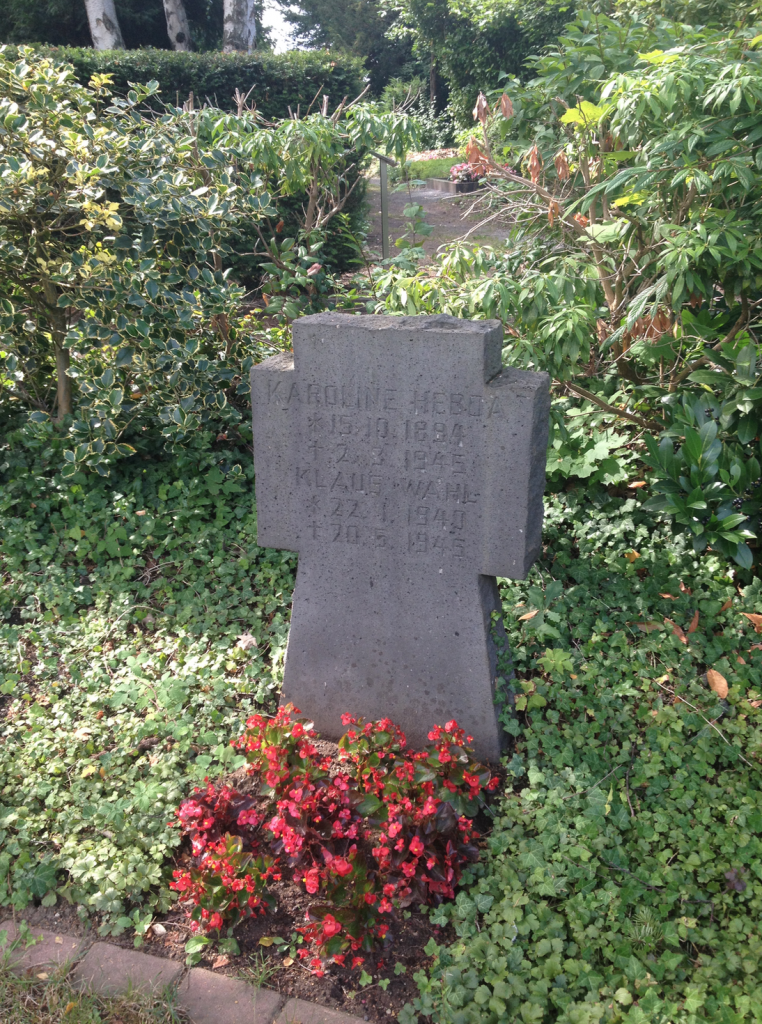
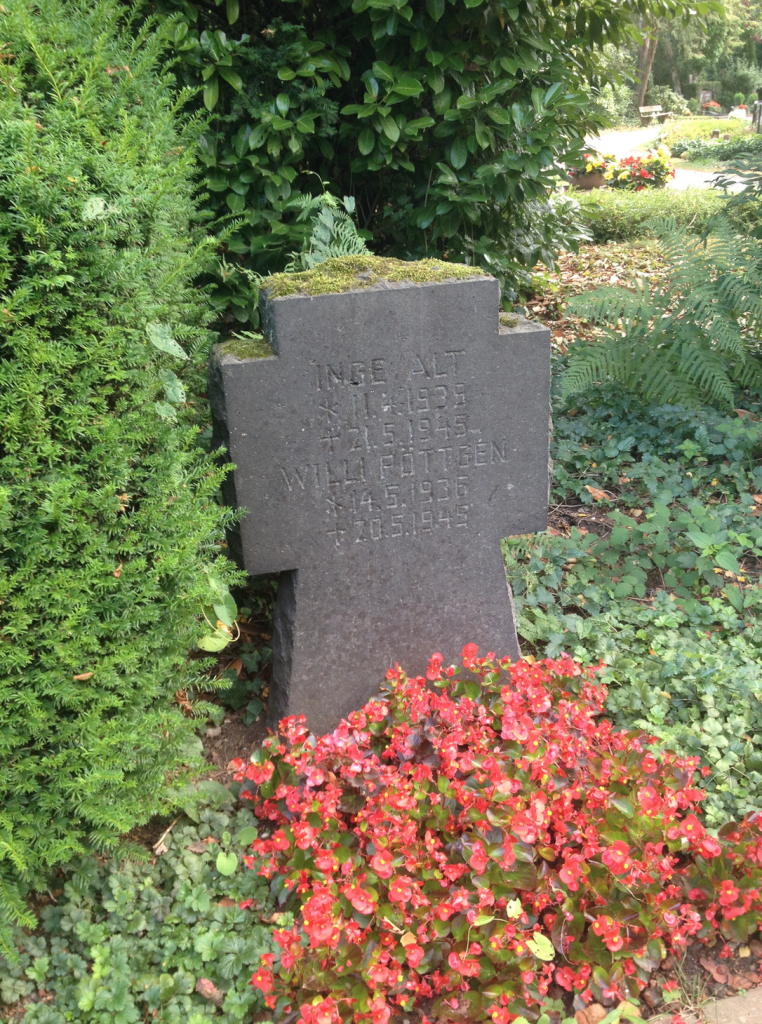
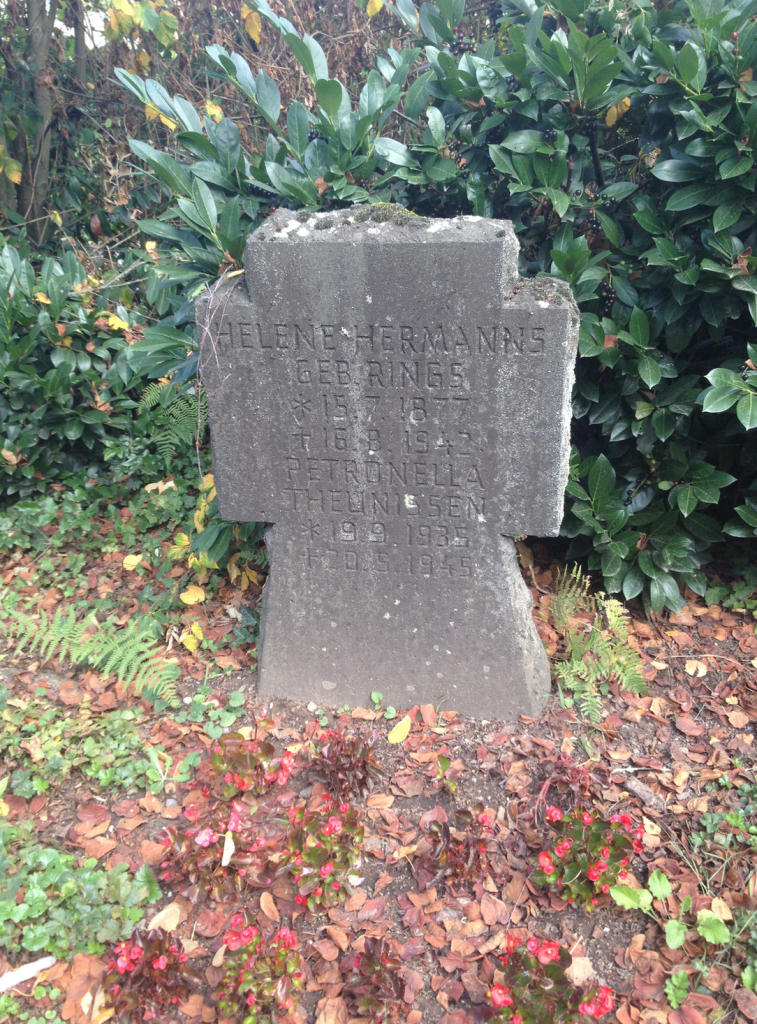
These children’s deaths are particularly tragic, not only because of their young age. At the time they died in May 1945, the fighting in Meerbusch was already over. A month earlier as the US army had passed through, the local German population had been evacuated from Meerbusch to villages to the south and west (mainly Heerdt and Willich) while the battle to cross the Rhine continued. By May the advancing army had passed through and the Meerbuschers had been allowed to return to their homes.
They came back to a scene of some devastation. The army of occupation had made free with provisions and possessions in the private homes they had occupied for a month. Bombardment from the opposite side of the Rhine had caused considerable destruction, as had explosions from booby traps and mines, such as the one which crippled a Sherman tank next to the Böhlerwerk.
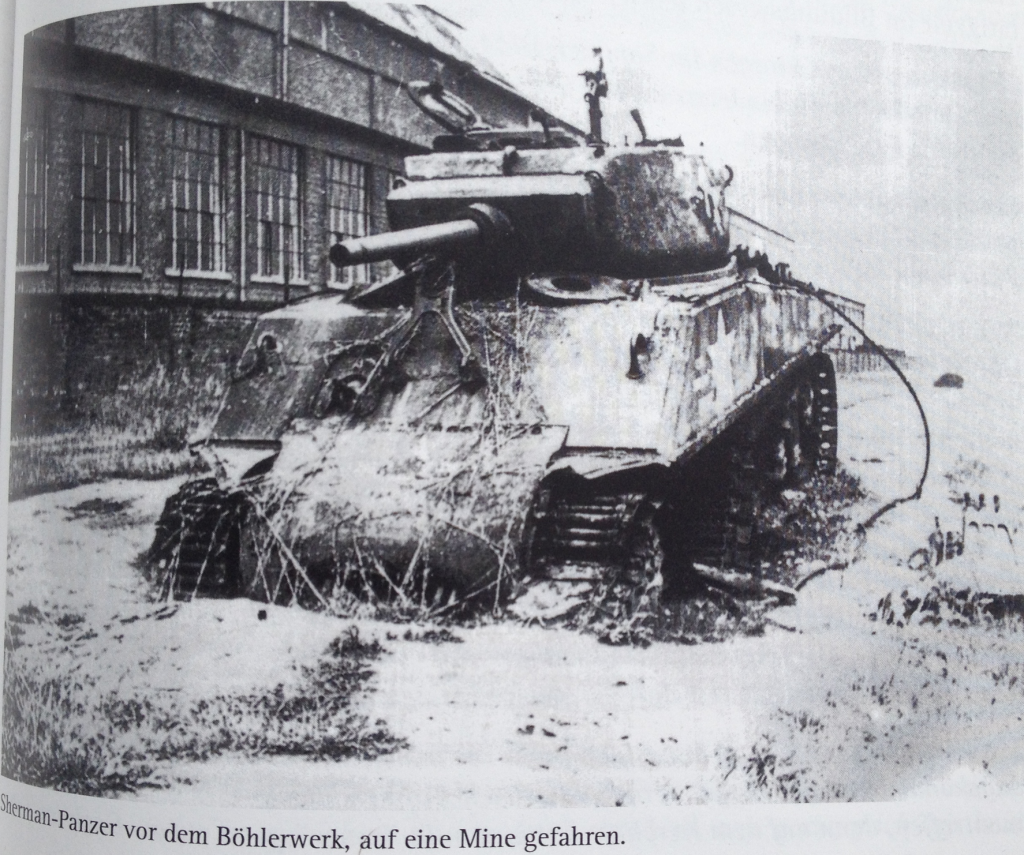
It was to this environment that Klaus Wahl, Willi Pöttgen and Petronella Theunissen returned to where they lived behind the Böhlerwerk on the Nordstrasse. On the 20th May the three young neighbours were exploring together outdoors when they discovered a new toy to play with. Tragically the ‘toy’ turned out to be a live grenade which exploded in their hands, killing them outright. They were the last casualties of world war two in Meerbusch.
In one history of Meerbusch I came across a picture of a place I don’t recognise. It seems to be a derelict tower standing on its own in woods. The description says it was taken in around 1900.
I have never come across this place in real life – maybe it no longer exists – or maybe it is hidden away off the beaten path somewhere. There are some references in historical documents. From the sixteenth century until at least 1745 it was owned by various members of the von Backum family.
